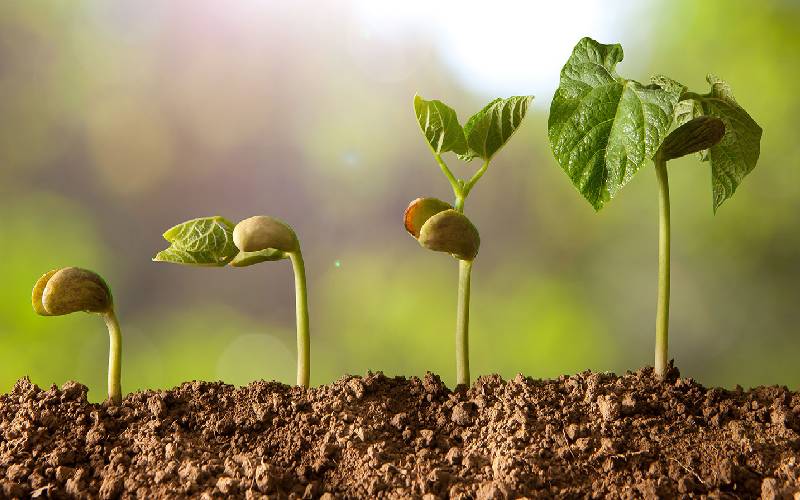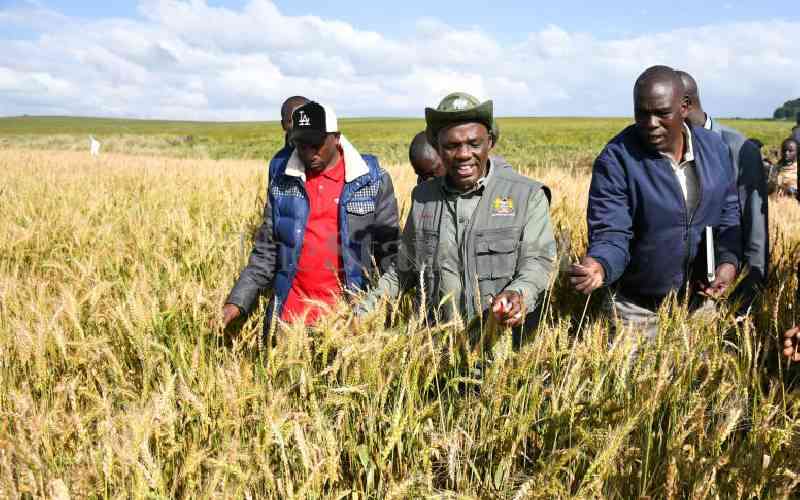As at June 2018, Kenya’s main foreign lenders included commercial banks, China and World Bank at 33 per cent, 22 per cent and 20 per cent respectively.
Interestingly, Kenya owes foreign debt to more than 20 countries and institutions though China is the most known .
In 2013, the country’s domestic debt was 54 per cent against 46 per cent external debt. This has since changed.
In February 2019, domestic to external debt tied at 50 per cent but will definitely change with the Eurobond 3 and the refinancing of the syndicated loan.
During the same period, Kenya’s debt stood at Sh5.3 trillion, increasing at a compounded annual growth rate of 24 per cent since 2013 and an absolute growth of 191 per cent.
Of grave concern on matters external debt is the country’s ability to generate dollar revenue. Foreign debt, most of which is denominated in US dollars, is only paid back in hard currency.
The Key indicator stops being debt to gross domestic product (GDP) and focus shifts to debt service ratios.
The question is whether Kenya is able to generate enough revenue in hard currency to service her debts.
For every Sh100 that the country earns from its exports, Sh70.7 goes to debt servicing without even factoring in the amount to be spent on imports.
External debt is a transfer of wealth from the country to the creditors hence the debt has to be more productive to ensure it boosts the economy to cover the external transfer of wealth.
Unfortunately, Kenya’s debt can be classified as unproductive as it is not self-liquidating, leading to more borrowing in 2018 and 2019 in the international markets to repay maturing debt.
A grave danger of borrowing in hard currency is borrowing in US dollars to invest in projects that generate local currency Kenya shillings, or projects that do not increase the ability to generate dollar denominated revenue.
Kenya’s external debt has gone into the Kenya shilling generating projects - of the amounts that can be accounted for - hence a huge currency mismatch.
Kenya earns her dollar inflows on exports predominated by agriculture, followed by diaspora remittances, foreign direct investment and tourism.
Stay informed. Subscribe to our newsletter
However, much of the external borrowing has not gone to improve these sectors to make them sustainable and efficient.
Commercial banks
Budget allocation to the agriculture has been stagnant or on a decline for the past five years as well as a negative credit growth from commercial banks to the sector.
Tourist arrivals have also been generally flat with a muted growth over the same period.
Diaspora remittances had an unexplained spike around the Supreme Court ruling and have been growing at a suspicious pace.
A portfolio of policies with emphasis tailored to a country’s niche in the global market is the surest way to go.
A case in point is agriculture - the engine of the economy and valuable source of income for most citizens.
About 75 per cent of Kenyans derive most of their livelihoods from the sector accounting for 18 per cent of GDP.
In spite of this, maximum yields have not been reached in arable land leaving considerable potential for increase in productivity.
What’s worst, most farmers work without certified seeds and technology or adequate financial and extension services.
In an effort to reduce debt, the State should up monetary and technical support to this sector.
A focus on this sector will increase the quality of exports at reduced costs, making them more competitive- leading to improved export earnings.
Export destination diversification is also a positive trade objective in sustaining economic growth as it will make Kenya less vulnerable to adverse terms of trade shocks by stabilising export revenues which will see to more rapid growth of income.
Other policy measures that can be adopted to fix the existing problem include balancing the budget gradually, without which the need to borrow continues.
Reducing recurrent expenditure by moving to contract based employment and economic projects prioritisation is key.
The State should also not implement everything in one election cycle, and until we clear our debts, creditors will pretend to be our best friends.
-The writer is the Chief Investment Officer at Amana Capital
 The Standard Group Plc is a
multi-media organization with investments in media platforms spanning newspaper
print operations, television, radio broadcasting, digital and online services. The
Standard Group is recognized as a leading multi-media house in Kenya with a key
influence in matters of national and international interest.
The Standard Group Plc is a
multi-media organization with investments in media platforms spanning newspaper
print operations, television, radio broadcasting, digital and online services. The
Standard Group is recognized as a leading multi-media house in Kenya with a key
influence in matters of national and international interest.
 The Standard Group Plc is a
multi-media organization with investments in media platforms spanning newspaper
print operations, television, radio broadcasting, digital and online services. The
Standard Group is recognized as a leading multi-media house in Kenya with a key
influence in matters of national and international interest.
The Standard Group Plc is a
multi-media organization with investments in media platforms spanning newspaper
print operations, television, radio broadcasting, digital and online services. The
Standard Group is recognized as a leading multi-media house in Kenya with a key
influence in matters of national and international interest.










